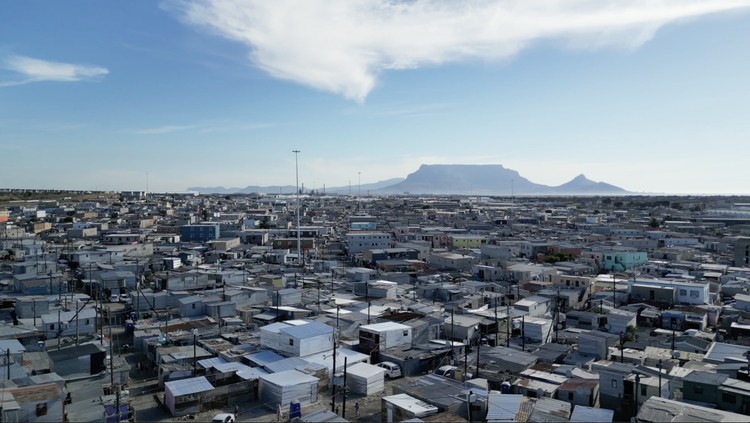Red tape delays Dunoon housing project
The housing project was first announced to residents in 2018, and construction won’t be starting anytime soon
This is Dunoon township on the outskirts of Cape Town. The last time government subsidised housing was built here was more than 20 years ago, but the population there continues to grow. Photo: Peter Luhanga
- More than six years after the then Cape Town mayor Patricia de Lille announced plans to build affordable housing in Dunoon, very little has been done.
- This development will be the first housing project in the overpopulated community in over 20 years.
- The City has blamed bureaucracy and red tape for the delays.
- It says the land rezoning application was only approved by the municipal planning tribunal in May.
Six years ago the then Cape Town mayor Patricia de Lille announced plans to build affordable housing in Dunoon.
Dunoon is home to more than 30,000 people and is considered to be largely overpopulated as essential resources in the area are increasingly becoming stretched and struggling to keep up with a mushrooming population.
Dunoon is among the few townships that benefited from early state-subsidised housing developments during the post-apartheid era. Between 1996 and 2000, nearly 3,000 RDP houses were built.
But in the past 24 years, there have been no new state-funded housing projects in Dunoon, resulting in several occupations of state- and privately-owned land in the area by people desperate for housing closer to employment opportunities.
When De Lille made the announcement in 2018 to a room full of residents at the Dunoon municipal hall, it was welcomed by many as a long-overdue initiative. People were told that the City of Cape Town and the Western Cape government had acquired land along the N7, adjacent to the residential communities of Richwood and Killarney Gardens.
She said the land would be used to build affordable housing for Dunoon residents in a development known as the Annandale project.
“New housing opportunities will include a range of community facilities and amenities. Part of the plan is to densify the neighbourhood with the construction of three-storey housing opportunities, and sites for retail and light industrial use. This will bring job opportunities closer to where people live and promote a more integrated Cape Town,” the party said in a statement in 2018.
But to date, no houses have been built.
According to the City’s Mayco Member for Human Settlements Carl Pophaim, the municipal planning by-law application to rezone the land for housing was submitted in September 2022.
This was then presented to the municipal planning tribunal in April this year, and was granted approval on 30 May. This was nearly two years after the application was first sent to council.
Pophaim told GroundUp that the environmental assessment, facilitated by an independent practitioner and administered by the provincial Department of Environmental Affairs and Development Planning, is ongoing. This process is estimated to be finalised in December next year, he said.
When asked whether Dunoon residents on the housing list would benefit from this new housing development, he said the City is yet to determine how many qualifying applicants from the area would be included.
Construction of this project will likely only start in the next financial year.
The City of Cape Town stated its development management department confirms that the rezoning of this site was approved on 16 April 2024 and no appeals were received.
Responding to concerns about overcrowding in Dunoon, Pophaim said that this development will directly alleviate some of these issues.
He encouraged residents to check and update their personal and contact details on the Housing Needs Register to ensure they are reachable for potential opportunities.
Community activist and chairperson of the South African National Civic Organisation’s (SANCO) Dunoon branch, Sinethemba Matomela, said the lack of housing development in Dunoon since 2000 has resulted in 33 informal settlements within Dunoon and surrounding areas.
Matomela said the slow progress of the Annandale housing project is concerning as families grow and children seek privacy, move out of their parents’ shacks and build their own on any open space they find.
He said people moved to Dunoon due to its proximity to work opportunities in the industrial areas of Killarney Gardens and Montague Gardens.
He also stated another factor contributing to density in Dunoon was the high rate of unemployment, leading to some residents who already have shacks in other informal settlements occupying vacant areas in Dunoon and building shacks which they rent out to earn an income.
Support independent journalism
Donate using Payfast

Don't miss out on the latest news
We respect your privacy, and promise we won't spam you.
© 2024 GroundUp. This article is licensed under a Creative Commons Attribution-NoDerivatives 4.0 International License.
You may republish this article, so long as you credit the authors and GroundUp, and do not change the text. Please include a link back to the original article.
We put an invisible pixel in the article so that we can count traffic to republishers. All analytics tools are solely on our servers. We do not give our logs to any third party. Logs are deleted after two weeks. We do not use any IP address identifying information except to count regional traffic. We are solely interested in counting hits, not tracking users. If you republish, please do not delete the invisible pixel.

